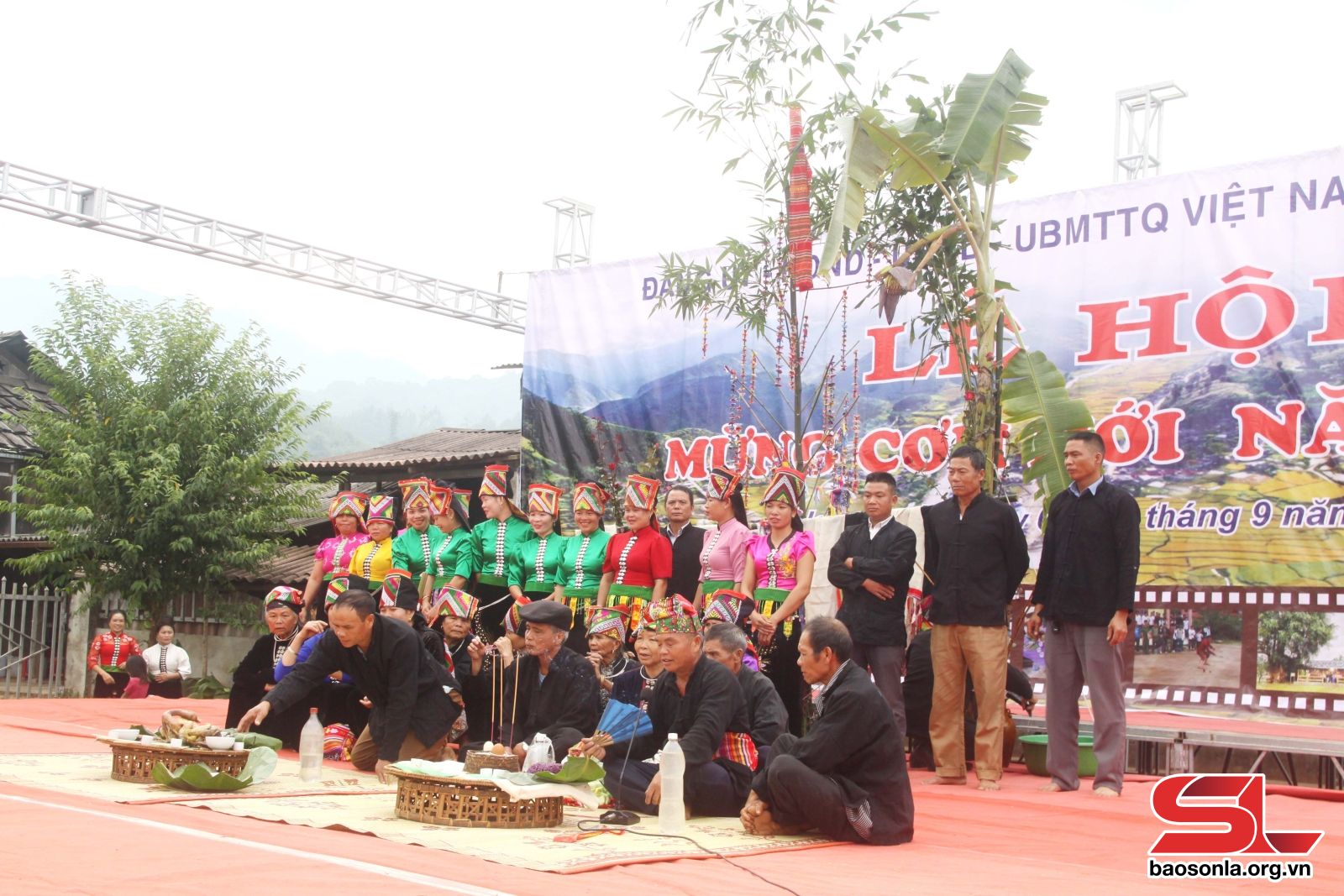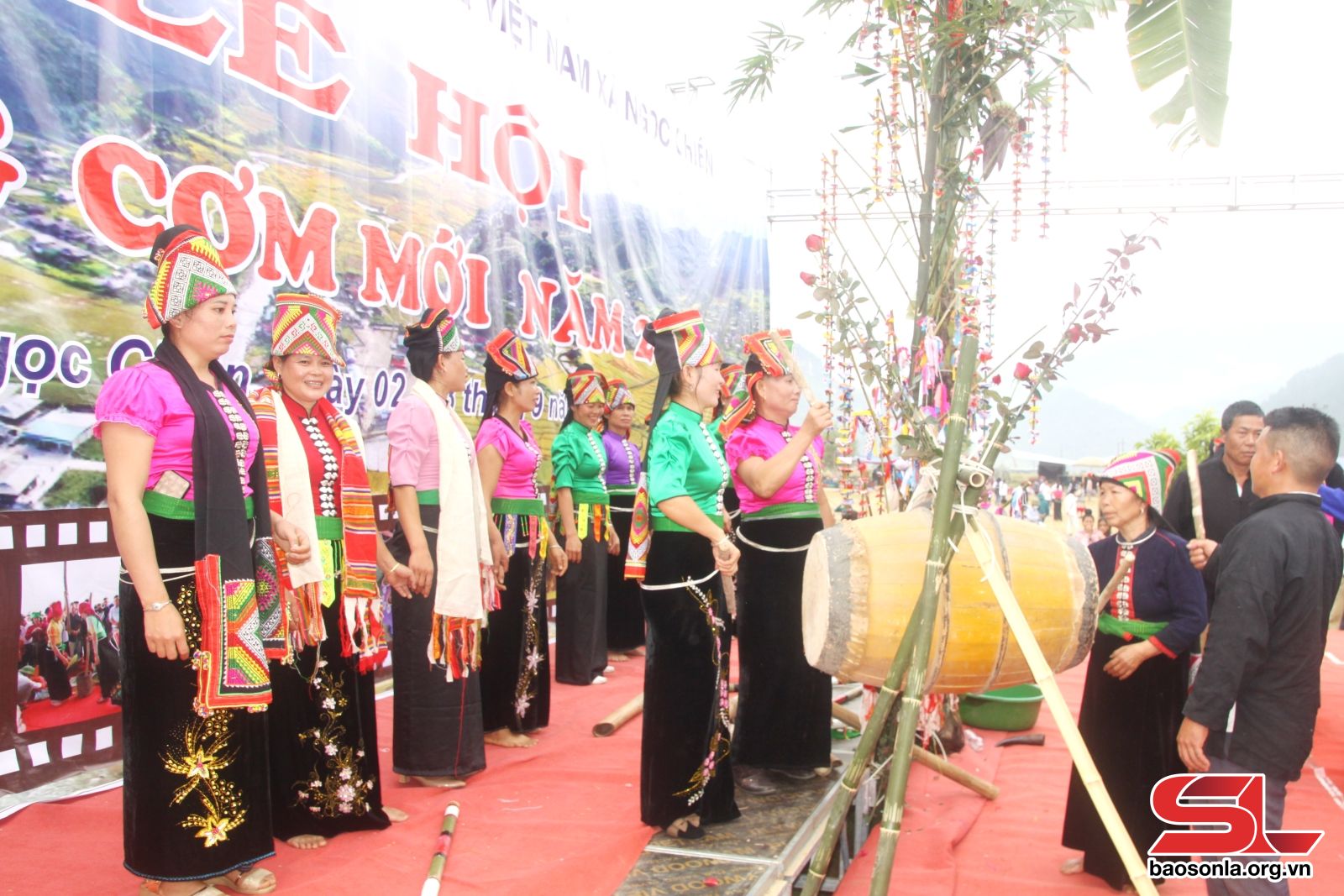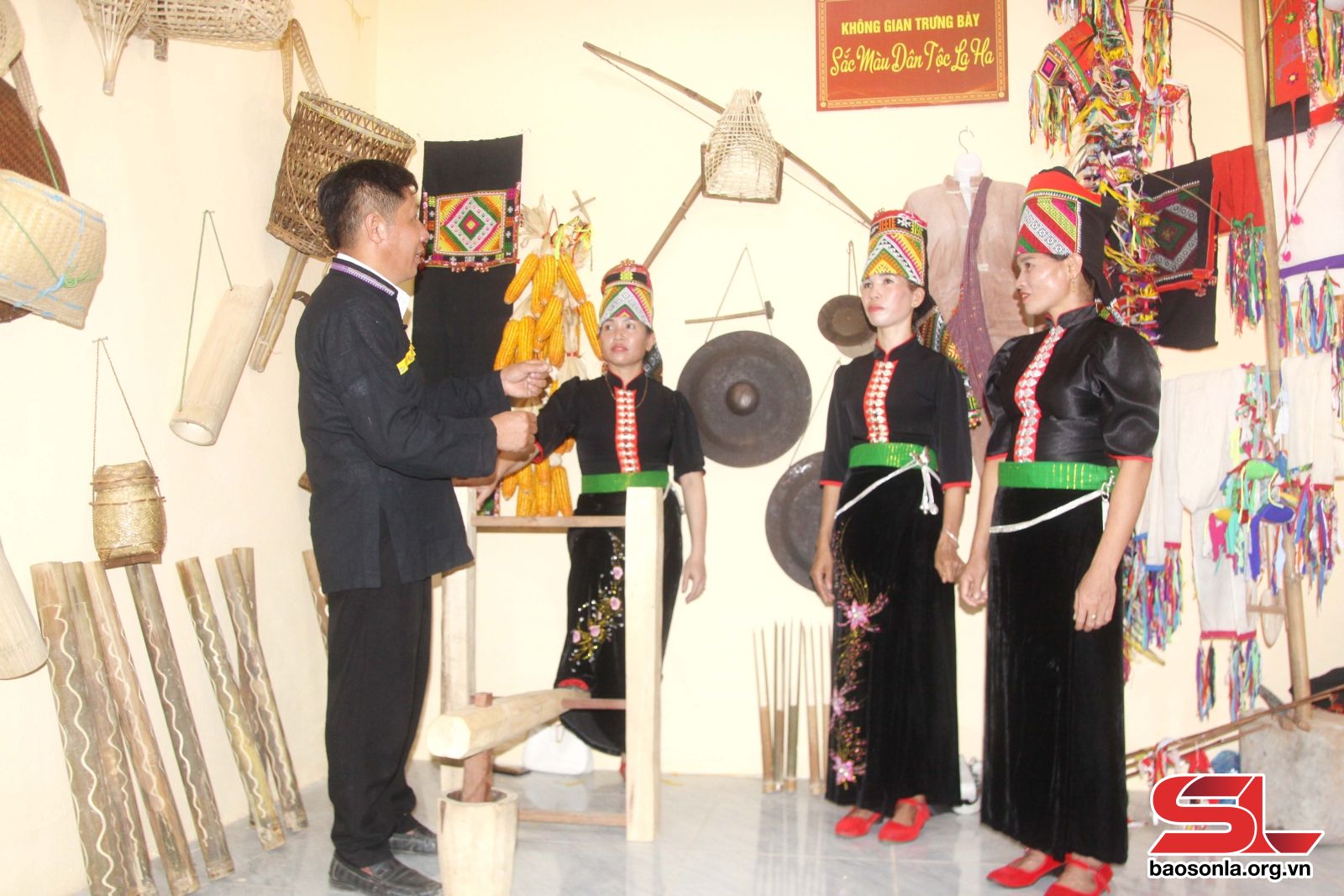
The offering tray includes boiled pork and chicken, fish, bitter bamboo shoots, white wine, ‘can’ wine (a type of wine stored in a big jar and drunk with long bamboo straws), sticky rice, and cash. In particular, the Xang Bok tree is indispensable in the worshiping ceremony. It is made from a bamboo tree and a sugarcane tree tied together standing up from the floor to the roof, and decorated with many items related to daily life. This kind of tree is also used for the festive part.

In the ritual part, the shaman invites ancestors, gods and traditional healers to attend the ceremony and enjoy the offerings of their adopted children (those cured by traditional healers), and bless them to stay healthy. The festive part includes dances imbued with ethnic identity, reflecting labour and production activities, and wish for the gods to bless happiness, good weather, lush trees, and no epidemics and disasters.

This is an opportunity for locals to meet each other and offer gifts to express their gratitude to their adoptive parents (traditional healers); exchange production experiences and treatment methods. With that unique feature, in recent years, this ritual has been restored by local Party committees and authorities, contributing to preserving the traditional culture of the La Ha people.
























You have 500/500 characters left
Please enter 5 or more characters!!!